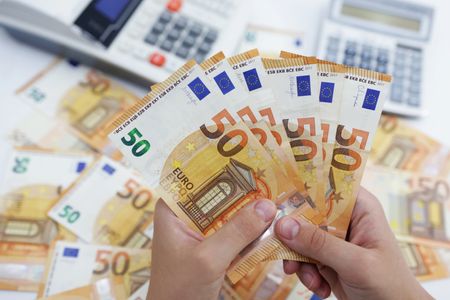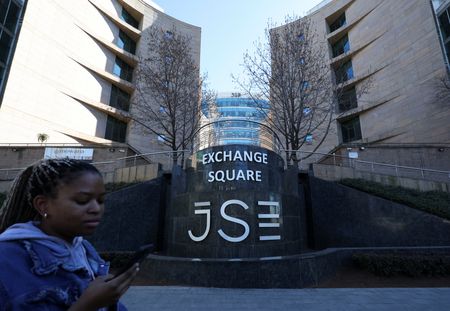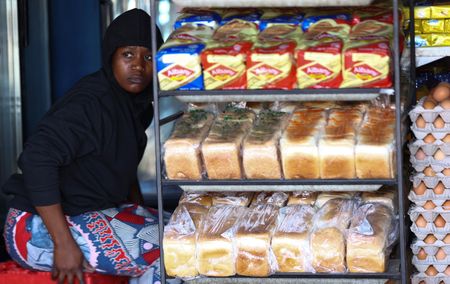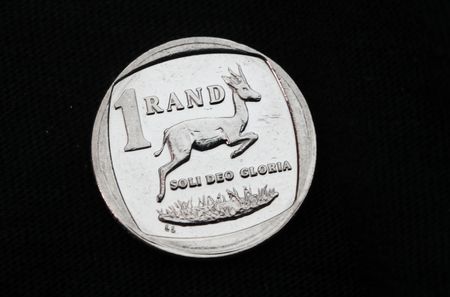By Rae Wee and Jaspreet Kalra
SINGAPORE/MUMBAI (Reuters) – The euro slipped against the dollar, sterling and Japanese yen on Monday, after Fitch downgraded France’s credit rating late last week, while investors turned their focus to a clutch of pivotal central bank policy decisions.
The common currency was a touch lower at $1.1725, also losing around 0.2% against sterling and the Japanese yen. The dollar was modestly lower against a basket of its peers at 97.5.
Fitch Ratings downgraded France’s sovereign credit score after hours on Friday, citing the government’s rising debt burden. The move strips the euro zone’s second-largest economy of its AA- status.
The downgrade was largely priced in by the markets in advance, which speaks to the muted reaction seen in the euro after the announcement, said Nick Rees, head of macro research at Monex Europe.
Analysts have pointed out that while fiscal worries in France could limit the euro’s gains in the near term, they are unlikely to spur a meaningful decline in the currency.
Data shows that speculative net long positions on the euro against the U.S. dollar continue to hold strong and ticked higher to $18.4 billion as of the week ended September 8, hovering near a two-year peak.
The euro’s resilience is underpinned by expectations of Federal Reserve policy easing alongside diminishing prospects for further European Central Bank rate cuts.
“The widening policy divergence opening up between the ECB and Fed heading into year-end will help to lift EUR/USD towards the 1.2000-level although the pair is currently struggling to break out of the recent trading range between 1.1500 and 1.1800,” analysts at MUFG said in a note.
Investors are closely monitoring this week’s key rate decisions in the U.S., Japan, United Kingdom, Canada, and Norway, with the Federal Reserve’s decision on Wednesday taking centre stage.
Money markets are fully pricing in a 25 basis point Fed rate cut, with a 6% chance of an outsized 50 bp reduction.
Just as important will be Fed members’ “dot plot” projections for rates and guidance from Fed Chair Jerome Powell for gauging the extent and pace of further easing.
“In order to have an impact on currencies, Powell will have to out-dove the market by giving quite explicit hints about follow-up rate cuts,” said Carol Kong, a currency strategist at Commonwealth Bank of Australia.
Elsewhere, sterling rose 0.3% to $1.3593, its strongest level in a month, while the dollar slipped 0.1% against the Japanese yen to 147.47 yen.
Both the Bank of England and Bank of Japan are expected to keep policy rates unchanged this week. Analysts are focusing on the BOE’s plans to slow its reduction of government bond holdings and the BOJ’s commentary to gauge the likelihood of a rate hike over the remainder of the year.
Among other currencies, the dollar slipped against the Norwegian and Swedish crowns.
The onshore yuan, meanwhile, got a slight lift from a weaker greenback and last stood at 7.1213 per dollar, despite Monday’s grim economic data which showed China’s factory output and retail sales in August logged their weakest growth since last year.
Also on investors’ radars were talks between U.S. and Chinese officials.
They concluded a first day of talks in Madrid on Sunday on their strained trade ties and a looming divestiture deadline for Chinese short-video app TikTok, amid Washington’s demands that its allies place tariffs on imports from China over its purchases of Russian oil.
(Reporting by Rae Wee and Jaspreet Kalra; Editing by Sonali Paul and Jacqueline Wong)











